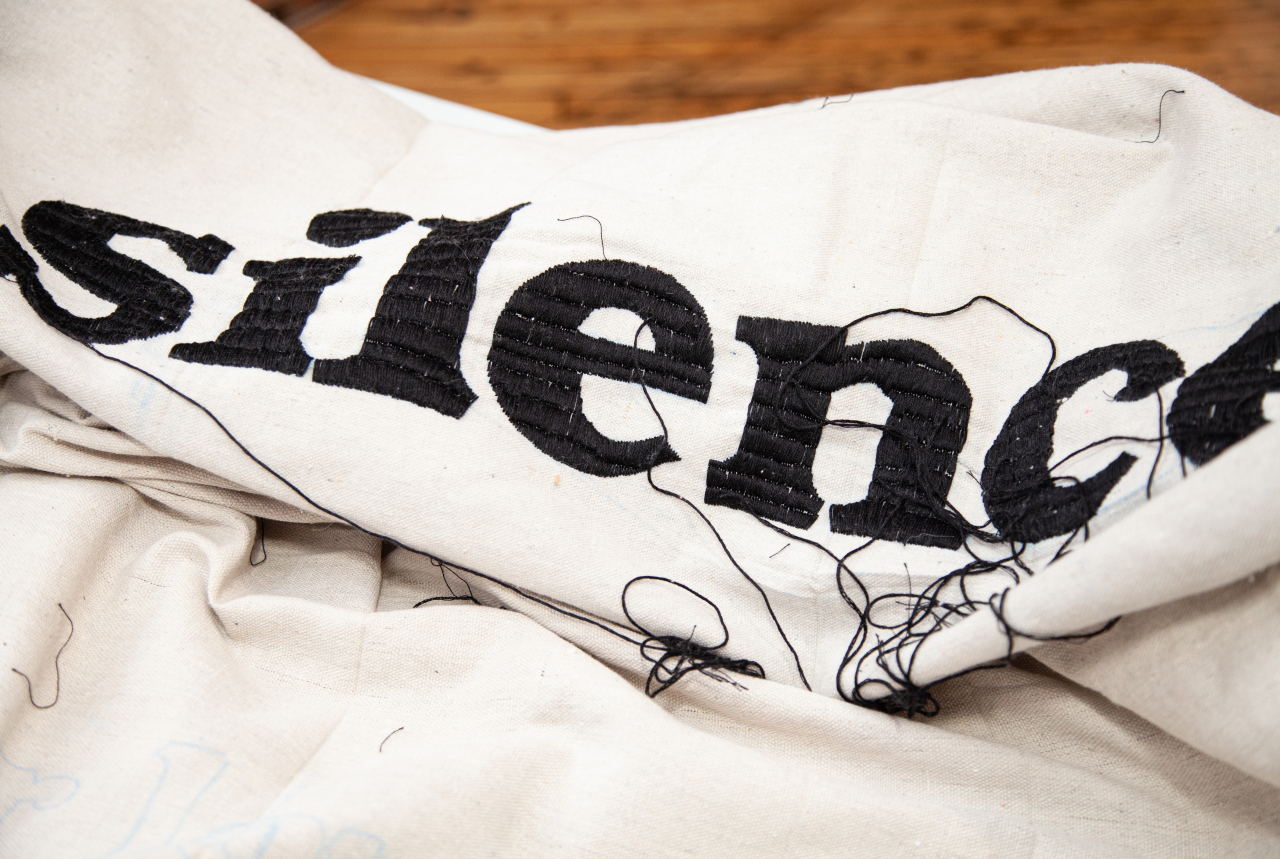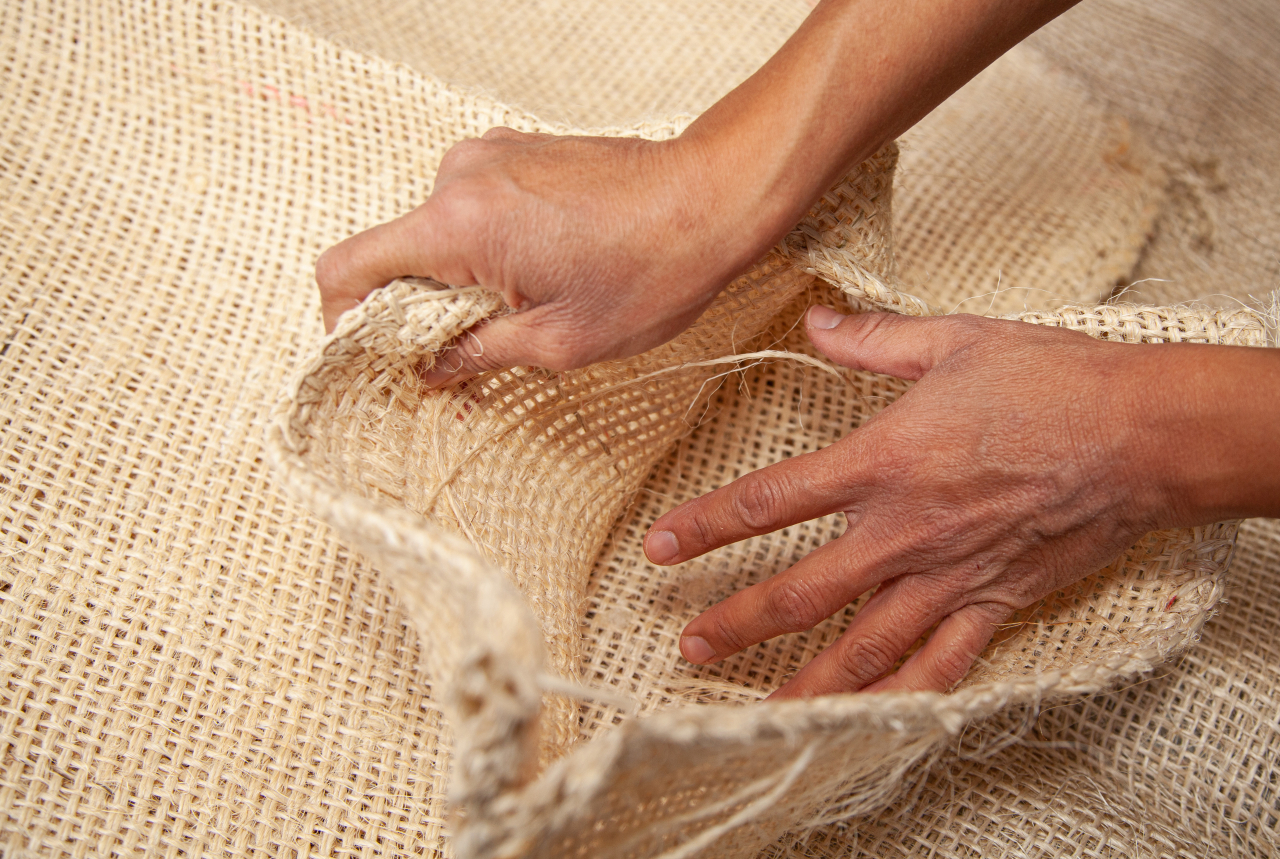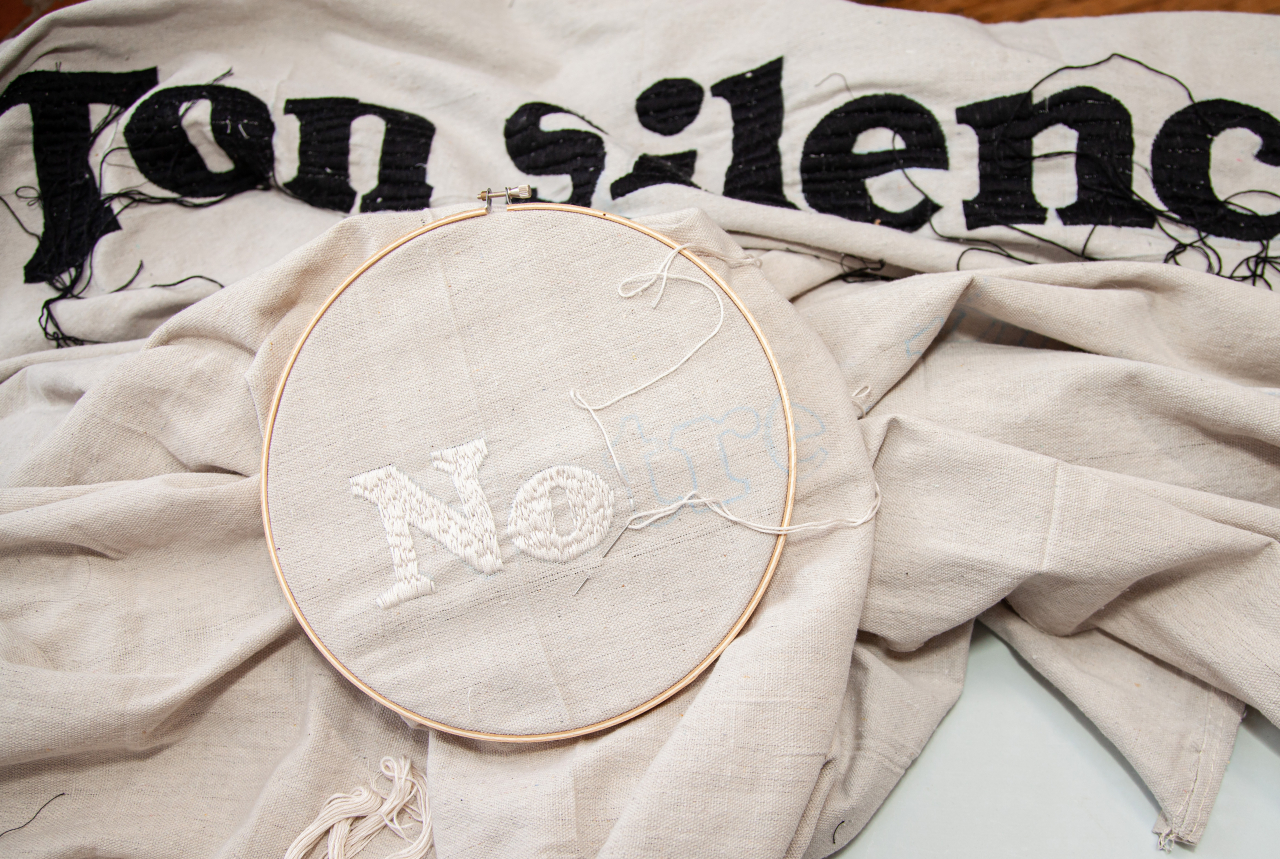Estela Lopez Solis
Notre douleur
Une série d’œuvres textiles sculpturales brodées à la main se déploient, sous forme d’installation in situ, dans l’espace du grenier de la Galerie d’art du Parc. Ici, le travail de broderie, souvent associé à l’univers domestique, nous ramène à la sphère publique. Certaines des pièces de tissu s’inspirent des grandes bannières qui, lors de manifestations massives au Mexique, affichent dans la rue des phrases peintes exprimant des revendications sociales ou politiques. Une tension entre l’intime et le public est ainsi transposée dans l’œuvre. Les énoncés brodés sur chaque élément textile semblent nous dévoiler des bribes de récits évoquant des blessures à la fois individuelles et collectives. Ces narrations fragmentaires demeurent ouvertes afin d’accueillir toutes les histoires avec lesquelles elles peuvent résonner. Invitée par la Biennale à collaborer avec Innofibre, Centre d’innovation de produits cellulosiques, pour la conception et la réalisation d’une œuvre, l’artiste s’est intéressée à la création d’un papier fabriqué avec des fibres de sisal d’origine mexicaine, récupérées de sacs destinés au transport de marchandises agricoles. L’œuvre découlant de cette recherche porte des inscriptions qui racontent l’histoire de l’exploitation humaine coloniale et postcoloniale reliée à la culture et au commerce du sisal et d’autres matières provenant des Amériques.
In the attic spaces of the Galerie d’art du Parc, a series of hand-embroidered sculptural textile works are spread out in a site-specific installation. While needlework is often associated with the domestic world, here it is displayed in the public sphere. Some artworks are inspired by the large banners bearing painted phrases that express social or political demands, used during mass demonstrations in Mexico. Tension between the intimate and the public is thus transposed into the piece. The statements embroidered on each portion of fibre seem to reveal snippets of stories evoking both individual and collective wounds. These fragmentary narratives remain open to all the tales with which they may resonate. The artist was invited by the Biennial to collaborate with Innofibre, a cellulosic product innovation centre, on the design and production of a work. She turned her attention to the creation of a paper made from sisal fibres from Mexico, recovered from the sacks used to transport agricultural goods. The work resulting from this research bears the marks that tell the story of colonial and post-colonial human exploitation linked to the cultivation and trade of sisal and other materials from the Americas.



Estela Lopez Solis, Notre douleur, 2024. Photo : Swann Bertholin
Biographie
Estela López Solís a étudié les arts visuels au Mexique, son pays d’origine. Elle vit et travaille en Estrie, sur le territoire ancestral de la nation W8banaki, le Ndakina. Sa recherche artistique est interdisciplinaire. Sa production a été présentée au Canada, en France, à Cuba, au Chili, aux États-Unis et au Mexique lors de divers événements et dans le cadre d’expositions individuelles et collectives, notamment à la Galerie de l’Université du Québec en Outaouais et aux Rencontres en art actuel Montréal ~ Habana. Avec la commissaire Marie Perrault et avec l’artiste Patrick Beaulieu, elle développe des projets de création participative.
Estela López Solís studied visual arts in her native Mexico. She lives and works in the Eastern Townships, on the ancestral territory of the W8banaki nation, the Ndakina. Her artistic research is interdisciplinary. Her work has been presented in Canada, France, Cuba, Chile, the United States and Mexico at various events and in solo and group exhibitions, notably at the Galerie de l’Université du Québec en Outaouais and at the Rencontres en art actuel Montréal ~ Habana. She develops participatory creative projects with curator Marie Perrault and artist Patrick Beaulieu.
